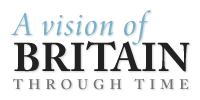 A vision of Britain through time
A vision of Britain through time
A vision of Britain from 1801 to now.
Including maps, statistical trends and historical descriptions.
 A vision of Britain through time
A vision of Britain through time
A vision of Britain from 1801 to now.
Including maps, statistical trends and historical descriptions.
The first census in 1801 simply divided people into those employed in agriculture and
those in trade or manufacturing, and the 1841 census, the first to gather detailed
occupational data, imposed no real order on it at all.
However, the first occupational classification, introduced in 1851, was clearly
concerned with social status as well as with what people made: it began with the Queen,
followed by government officials and then by 'the learned professions'.
In the twentieth century a separate system of social classes was devised.
Originally created to help understand mortality, the Registrar General's Social
Classification was tabulated by the census from 1951 onwards.
However, the Office for National Statistics no longer officially use the
social classification, but instead provide data for an essentially similar
set of 'Social Grades' defined by the British Market Research Society.
To provide a longer perspective we have re-organised earlier occupational
information to the same system.
Like the published 1951 data, all our figures are limited to men.
This is only possible where we have very detailed occupational statistics at
district-level, so these earlier censuses are limited to
1841, where the replies to the occupational question were tabulated almost
raw; 1881, where we can use complete data from the enumerator's books; and
1931, which produced the most detailed of all occupational reports.
We hold these detailed statistics for Derbyshire, which we graph and tabulate here:
| Available datasets | Period covered | Variables (number of categories) |
|---|---|---|
| Social Grade | 1951 to 2011 |
Social Grade (simplified)
(3) |
Read more about how we hold statistics here.